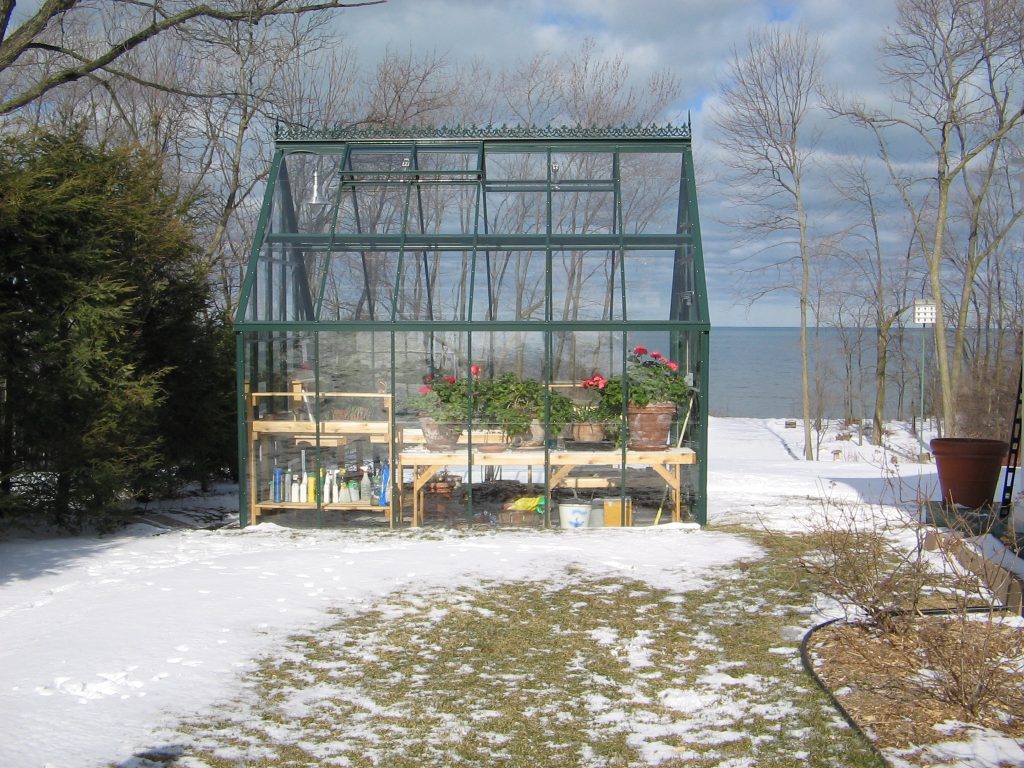
Jack Frost has already drawn up his list of greenhouses to visit. Will you be ready? Here’s the routine we follow at our house each fall.
Clean The Greenhouse
Take all plants out of the greenhouse and thoroughly clean the frame, glazing and benches. Physan 20 is an effective disinfectant.
Make glass sparkle brightly again with your favorite glass cleaner. For stubborn algae spots, I spray with Physan 20 or household bleach and let them soak before rinsing.
Fiberglass and Multi-Wall polycarbonate should be rinsed and then washed with a mild liquid dishwashing soap and lukewarm water. Use a soft cloth or sponge. For polycarbonate, rub only in the same direction as the channels to avoid scratches that show. For more Multi-Wall cleaning tips see Greenhouse Cleaning & Maintenance.
Wood frameworks will benefit from another application of copper or zinc preservative or latex paint. Metal frames, door hinges and vents should be oiled.
Heat Conservation / Insulation
If you have wanted to upgrade your greenhouse, now is the time to replace poly or single glass with insulated Multi-Wall polycarbonate. The Polycarbonate Store located at Charley’s will cut the panels to fit your requirements. Simply send your sizes for price quotes.
Replace any broken glass or aging poly cover. Caulk as necessary, especially around the foundation. Apply foam tapes to doors and vents to make an airtight seal.
If you have single layer glass and plan to heat your greenhouse, Bubble Insulation or Reflectix Insulation can provide significant heat savings. Simply apply to the inside of the walls and roof.
Check Your Heater
Test run your heater and replace any component that does not operate perfectly. Clean the fan blades and oil the motor.
Check the accuracy of the heater thermostat… Monitor air temperature with a min./max. thermometer. Set the heater thermostat 10°F above the present temperature. When the heater shuts off, reset the min./max. thermometer. Let the system run for 30 minutes with several on/off cycles. Check the min./max. thermometer. Variation should be 2°F to 4°F. More than 6°F variation should be investigated and corrected.
Winter Storm Emergencies
Keep a backup heater ready for immediate use. Portable propane and kerosene heaters are popular emergency heaters. Remember – both require some ventilation. Also have on hand a storm cover, extra polyfilm and polyfilm repair tape. Make a checklist of what you’ll do if severe weather strikes or the greenhouse heater fails.
Power Failure: A battery-operated temperature alarm is essential if the heat goes off in the middle of the night. If you do not have a backup heater, you can provide temporary heat by draining the household water heater and placing buckets of hot water in the greenhouse. Cover the plants with newspapers.
If Freezing Is Unavoidable: BE SURE TO DRAIN ALL WATER LINES! Spray plants with water. A coating of ice (32°F) will offer some protection from colder temperatures for hardier plants.






